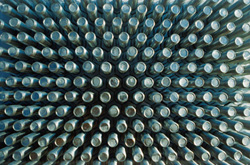Process modelling of aluminium casting
The ever-increasing use of aluminium in many industrial applications has brought forth new market and environmental demands with dramatic impacts on its production. Until now, process development of a new product or alloy is mainly based on laboratory experiments and trial-and-error optimisation methods. Moving a step beyond, the VIRCAST project focused on a different approach through process chain modelling. This involves suitable mathematical and numerical modelling of specific solidification processes and their relation to the casting and homogenisation. The latter are key phenomena that can considerably affect the productivity and product quality in aluminium industry. Within this context, a mathematical model for the prediction of the as-cast microstructure and its optimisation by appropriately adjusting various casting parameters was generated and verified. This model, which has been integrated into a powerful software tool, named "Virtual cast house", can be utilised with the aid of a suitable, user-friendly and flexible interface. The dedicated interface offers pre-processing of the pseudo-front tracking model for the description of as-cast microstructures. Key viewable model inputs include temperature/heat extraction rate as a function of time, phase diagram and diffusion coefficient in the various phases. Additionally, volumetric specific and latent heat, Gibbs-Thomson coefficient, the crystal's symmetry order, relative stiffness of the surface tension and total simulation time can also be read. The graphical interface allows the user to visualise concentration and solid fraction maps at various times, temperature evolution and evolution of the solid fraction in the calculation domain. The solidification path is also displayed, while it is planned that it will also provide maps of the fractions of secondary phases. The robust "Virtual Cast House" can offer cast houses with unlimited possibilities for process optimisation in the most cost-efficient way. It may also provide them with the competitive advantage by generating tailored products of superior quality with minimum environmental impact.

